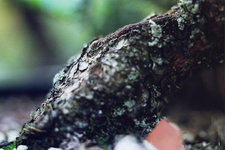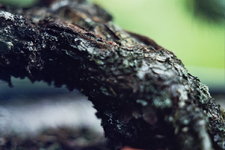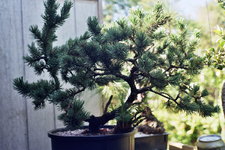I've been growing Pinus Aristata from seed for about 6 months now and they are doing ok so far. I'm along CA coast at 940 feet elevation. I'm also growing black pine and black spruce, who are also doing fine so far.
All this talk is making me a little nervous for my little buddies.

From seed is one of the ways to find the unique genetic recombination that might allow a bristlecone to survive in your environment. Each seed has a unique assortment of the bristlecone genome. Out of a thousand seedlings, you will definitely see a few that thrive better than the rest. Those few will be better adapted to your environment. If one or more survives long term, you will have cracked the problem. You will have found the genetic outlier that can thrive at low elevation. So hopefully you will get lucky. You might not, but if you did not try, you are guaranteed to not get lucky. So raising bristlecone from seed is one way to find the individual plants that have the right genetic mix to survive in lower elevation. Sadly, a lot of seedlings won't survive, but if you find the one or two that do, that would be great.
@Leo in N E Illinois I’m still very new to this and the ignorant me purchased two bristlecone pines last year. Sadly, I fully expect to add these two to your mountain of evidence.
There are a fair number of dead bristlecone carcasses in my compost pile. I was told they wouldn't make it. I had to see for myself. The bristlecone has a mystique that really captures the imagination. I really wish I were wrong, and people that keep trying to raise them is the only way the "code will get cracked" as to whether it is possible to grow them at low elevation and or east of the Mississippi. If you "get lucky" that would be great. If they fail, try again, but with less expensive material.
There are trees that are difficult to bring into cultivation. For example, jack pine, Pinus banksiana is notorious for being difficult to get it to survive the collections process and the first repotting after collection. Turns out that if you are lucky enough to get a jack pine to to survive these two steps, it is pretty "docile" a tree that responds well otherwise to bonsai culture. Jack pines from seed grow relatively fast and develop well, on a par with Pinus sylvestris. And they are incredibly cold hardy. From seed and nursery grafted select cultivars have proven to be excellent as bonsai. I have "Manoment' and 'Chippewa' that have nearly invisible graft unions and are really looking like decent bonsai material.
Pinion pine have been proving to be extraordinarily difficult to collect from the wild. I hope those who have access to them eventually sort out the timing issues and or get lucky and find some with roots in "rock pockets" that are possible to collect. I imagine with time, seedlings and grafted nursery material will be available and hopefully end up with a good track record.
Pinus lambertiana - the sugar pine - is a white pine, or 5 needle pine with nice short needles that also has been proving difficult in bonsai cultivation. Another with "potential" but has issues that need to be sorted out.
It is disappointing that of the 8 species of 5 needle white pines native to North America, only the limber pine, P. flexilis and the southwestern white pine, P. strobiformis, have been proving adaptable and convincing as bonsai. The others all have either horticultural issues, like the whitebark pine, P. albicaulis, being another high elevation resident. Or have growth habit issues that make them lousy for bonsai, like the eastern white pine, Pinus strobus. Strobus is easy to grow, but will frustrate even the best bonsai artists as its internodes are long, foliage is in "pompoms" and it just never makes a bonsai image like a Japanese white pine does so well. Strobus does have one strength, it is absolutely the best understock for Japanese white pine for trees destine to live in zone 5 or colder. Strobus roots survive cold, wet winters well, even winter flooding. A strobus can be frozen into a block of ice, and when thawed, will bounce back no problem. As bonsai, with only a very few exceptions, strobus looks like crap.
So difficult species abound. There is wisdom in the original Japanese custom of using only species that are locally native for bonsai. If it doesn't naturally grow within a hundred miles of you, or at your elevation, maybe you should reconsider growing it as bonsai. But where's the fun in sticking to that. I have many plants that are not even native to my continent. I just have to be prepared to have trouble with their horticulture.
There is a landscape planted p. aristata a few blocks from me. I'd guess it is 30 years old, and that it has been in its present location for well over a decade. Elevation might be 100 feet.
There is a
grower of large landscape plants in Mount Vernon, WA that has
p. aristata among it offerings. I've looked at some of them, ranging from 4 foot saplings to 20 footers. Being about 20 miles inland, it does get a bit warmer there in summer and a bit colder in winter than on my magic island. Still we're talking about USDA hardiness zone 8 and AHS head index 1 type of climate and elevations below 500 feet.
I think the relevance of the altitude of p. aristata's native range is that it identifies it to be a sub-alpine species that almost certainly has a significant bud chilling time requirement to thrive and that it can survive with a fairly short growing season. The bud chilling time is almost always the limiter for landscape/container growing. I am in a Douglas fir forest that carries on, more or less continuously up to timberline in the Cascades. The accumulated chilling hours is more than 1000 hours. I also note that
@Potawatomi13 is similarly in a Douglas fir forest in OR.
Unless you're living in the Sierra, I expect you guys in SoCal are going to have a difficult time keeping p. aristata alive. Without sufficient bud chill, there will be progressively less new foliage each year and then none, ultimately. Anywhere in CO should be okay in this regard, I think.
P. aristata is reportedly cold hardy to USDA 4, so Leo should be able to grow it, should he get the bug.
My friend, you live in the "magical zone". I did point out that those in "certain areas" of the Pacific Northwest seem to be blessed. That is probably key. If you have douglas fir NATIVE in your landscape, you might have a good chance of being able to do well with bristlecone.













